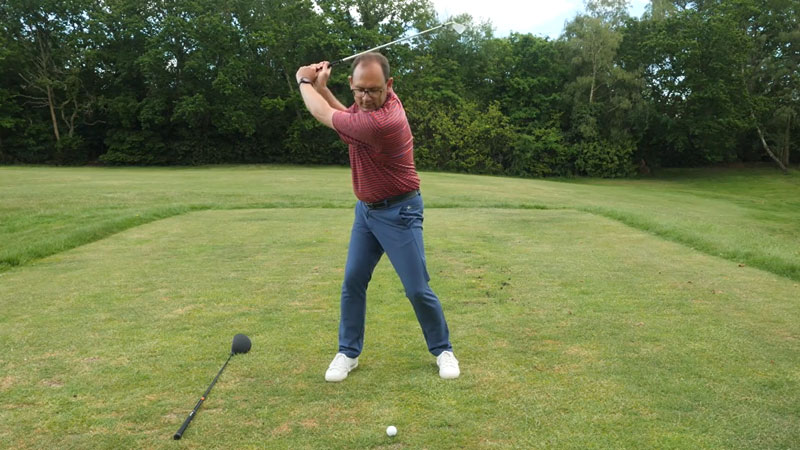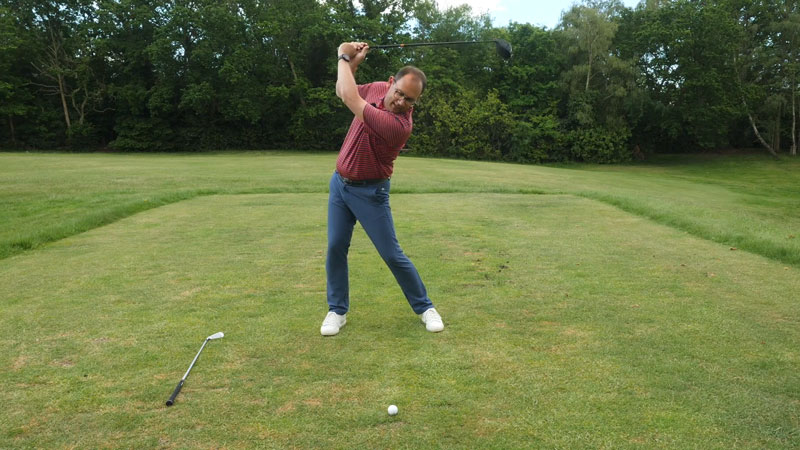Weight Distribution In The Golf Swing
Finding the right weight distribution in the golf swing could be the difference between consistent ball-striking and many common swing faults...


Improving the effectiveness of your weight distribution in the golf swing is one of the most important tips for better ball striking, but it's a problem that many amateurs struggle to overcome.
In this video and article, we asked PGA professional and Golf Monthly Top 50 Coach Kristian Baker to explain everything you need to know about weight distribution in the golf swing...
Weight Distribution In The Golf Swing Explained
While it won't be the same for everyone, there are some general principles that apply to all golfers and are a great checkpoint for those struggling with weight distribution in the golf swing.
The first is your address position, and it often depends on your club selection. When you have an iron in hand, stand with your weight balanced equally between both feet and feel as though it runs through the front of your ankles.
Pair that with knowing how far to stand from the golf club, and you will create a good solid base to make an athletic swing. A lot of modern professionals remain very centred throughout their swing, so let me explain how it works...
How Your Weight Shifts In The Backswing

When turning to the top, the best players in the world coil brilliants, with their weight shifted to the inside of their trail foot. While this creates the impression of being stacked on top of the ball, they actually assume a great position to unwind, push of their back foot and generate plenty of power.
A word of warning however, if you are trying to replicate this, as with an iron in hand the lead foot can become unstable. Try to keep your left foot planted to help firm up the lead side, as this will allow you to swing more aggressively and boost your clubhead speed.
Get the Golf Monthly Newsletter
Subscribe to the Golf Monthly newsletter to stay up to date with all the latest tour news, equipment news, reviews, head-to-heads and buyer’s guides from our team of experienced experts.
Weight Distribution With Driver
When it comes to the driver, keep the weight fairly evenly spread at address but make sure you're in a set-up position that promotes a good driver launch angle. That means the ball position should be lined up with the inside of your lead heel and the spine should be tilted away from the target slightly.
Amateurs are often guilty of swaying when they unleash the chief, meaning that, instead of the weight moving back then through, the opposite happens. To keep balance with a backswing sway, the upper body tends to lean towards the target, resulting in the dreaded reverse pivot (see the image below) - one of the biggest driving mistakes in the game.
Reverse Pivot And Weight Distribution

When the pelvis shifts back and forward laterally, the low point is constantly changing, thus making it incredibly difficult to find the centre of the face consistently and costing you precious yards.
So, what does a good pivot look like and how should your weight be distributed through the golf swing? Well, turning rather than swaying is a good place to start. This will get you set up in a much more athletic position at the top of the backswing.
From there, you want to feel like the lead hip initiates the move towards the ball, which will ensure the weight shifts forward and brings the club nicely on plane. Then you can turn through the ball with your entire body, which will result in more centre strikes, and therefore more power and accuracy. Simple enough, right?
Go to the range and practise getting into the correct set-up position with a variety of clubs, before working on turning rather than swaying. Remember, the weight should feel like it shifts to the inside of your trail heel at the top of the backswing.
Once you've mastered that, work on pushing off so the weight moves through the ball, towards the target and into a nice finish position.
Weight Distribution And Angle Of Attack
As with everything in the golf swing, one movement will cause a chain reaction. One of the reasons to pay close attention to how your weight moves is that it will have a direct impact on your angle of attack through impact. If your weight is too far back as you head towards impact, your attack angle will be too shallow. Conversely, if your weight moves towards the target too much or too early, you'll hit down on the ball from too steep an angle.
Either way, poor strikes and sub-optimal ball flights will be the inevitable result.

Location: Sunningdale Heath Golf Club
Kristian worked at Wentworth for 23 years and was the Head of Instruction for over a decade. He has worked with a huge number of leading professionals and amateurs and his most successful amateur was the 2017 British Amateur and 2012 English Amateur champion Harry Ellis. He is now the co-owner of Sunningdale Heath and is also the author of The Winning Golf Swing.
Teaching philosophy:
Help the golfer to understand their impact tendencies and swing through evidence. Data and evidence makes a student and coach accountable.
The player must have a clear understanding of their issue and the solutions. Keep it as simple as possible for the student to understand (regardless of ability) and give them a clear understanding of our plans. I think it’s also very important to understand the students personality and circumstances.
Greatest teaching success story:
Teaching Ross Fisher from 2001 to 2009. During this time he went from being a county player to gaining his European tour card and being in the top 20 in the world rankings. During this time he led all four majors in a single year and won the grand slam crown for compiling the lowest composite score. He won several amateur events and as a professional the European Open. During the time I coached him he improved his amateur and professional ranking every year. Other students include Zane Scotland, Stephen Brown and Inci Mehmet.
Describe what you do to ensure clear communication with a student:
The use of technology can often be seen as making something more complex. Used in the right way it actually simplifies an issue and creates clarity. Assessing each individuals best way of leaning and understanding and then constantly trying to adapt to them and their ways.
Students learn best when…
They have a clear understanding of the what to change, why and how
-
 Reports: Wesley Bryan Suspended By PGA Tour After Playing In LIV Golf Duels
Reports: Wesley Bryan Suspended By PGA Tour After Playing In LIV Golf DuelsThe 2017 RBC Heritage winner is said to have been suspended by the PGA Tour after teeing it up in the recent LIV Golf creator event in Miami
By Elliott Heath
-
 LIV Golf Mexico City: Book Your Tickets To See The Stars Of The Game
LIV Golf Mexico City: Book Your Tickets To See The Stars Of The GameMexico City welcomes LIV Golf's all-star roster later this month, where you can see the world's best players and enjoy the show and the family friendly atmosphere
By Golf Monthly